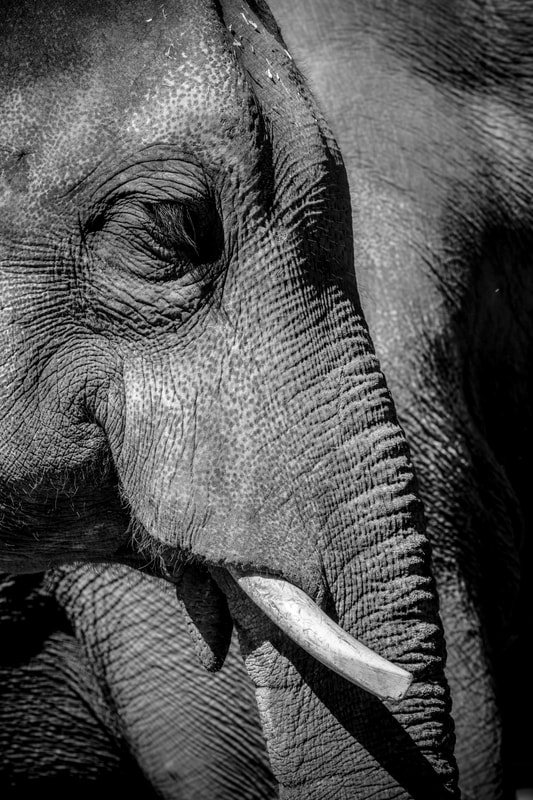|
Ca10(PO4)6(CO3)H2O). This inorganic formula has been one of the most controversial topics in recent history. It is called dentine, which is the main property of ivory. True ivory is only found in the tusks of elephants and mammoths. What does it cost? One hundred elephants are poached every day, and they are now an endangered species. Elephants are not the only animals being poached for ivory. As the elephant population drops, ivory poachers are looking to other animals to line their pockets. Rhinos, hippopotami, walruses, sperm whales, and hornbills are now victims of the ivory trade.
Many nations have already passed laws against the ivory trade, but how do we control the black market? Illegal sales bring in $1,500 per pound, with one pair of tusks having the ability to bring in $375,000. The first international ivory ban took place in 1989 and prices for ivory plummeted. Since then the ban has been a rocky process. In 1999 trade opened up to Japan and over six thousand elephants were poached for their ivory despite the fact there was over fifty tons of ivory tusks stocked around Africa from the ban a decade earlier. The trade with Japan stayed open for one year and then international trade was banned once again. Two years later China and Japan opened customs for ivory trades, and two years after that, tourist trade was allowed. In 2011, a few African countries started taking matters into their own hands. Kenya and Gabon burned over nine tons of ivory combined. Inspired by this rebellion against the ivory trade, the United States and the Philippines destroyed their ivory stock piles, which then inspired other countries to destroy their stockpiles as well. Major restrictions were implemented on international ivory trade by 182 nations. Many countries in Africa started to destroy their stockpiles of ivory. It was looking positive for the elephant population. The Eastern worlds doors were still open to the ivory market, and the demand was incredibly high since ivory traders were lacking buyers. How does the black market factor into this? China, in a major step towards protecting elephants, banned ivory trade at the end of 2017. It was found that Chinese businesses were smuggling illegal ivory into the legal market. All of the ivory carving factories and retailers shuttered at the end of the year. Do all of the laws and bans really make a difference in the black market? Prices for ivory dropped from $2,100 a kilo to $500 a kilo. That’s a quarter of the cost, or in more dramatic terms, a four hundred percent depreciation. The black market has been struggling in recent years due to the strong bans from major countries and education on poaching to the masses. In the last five years there was a seventy percent increase in education in the ivory black market, and of that, ninety five percent supported a ban on sales. We must continue to educate on the topic of ivory, even as these bans take place and the black market for ivory plummets. Elephants are not the only victims of the ivory trade, now that true ivory is banned by all major markets. Rhinos, hippopotami, walruses, sperm whales, hornbills all need protection as poachers look to them for their horns, beaks and teeth. Future years will hopefully show bans put in place on all ivory trades so that all of these animals may stay protected from extinction.
0 Comments
Leave a Reply. |
All
|

